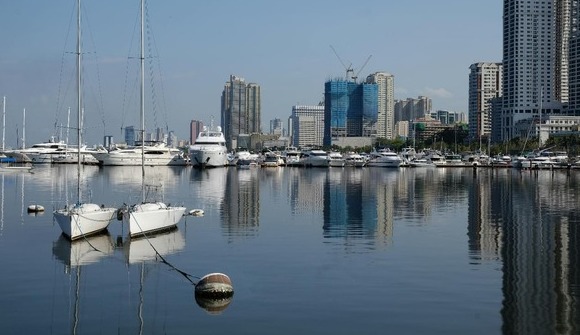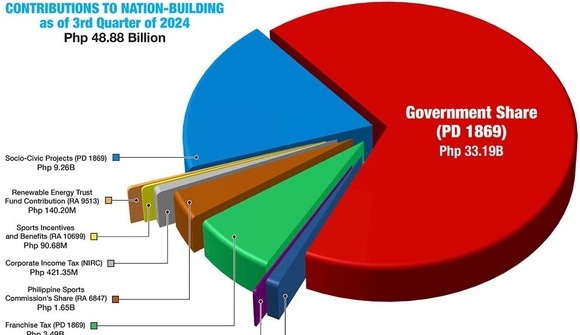
PH Condo Vacancies Increase in 2024 3Q Due to POGO Ban
Vacancy rates for condominiums in Metro Manila saw a slight increase in the third quarter of 2024, according to a recent report by Colliers Philippines. The rise in vacancies is partly attributed to Chinese nationals vacating their units, ahead of the total ban on Philippine offshore gaming operators (POGOs).
Colliers PH’s quarterly market report, which was cited by The Manila Times, revealed that the vacancy rate for the July to September period climbed to 17.4%, up from 17.2% in the previous quarter, with the Manila Bay area seeing a particularly noticeable uptick in empty units.
“Vacancy in Metro Manila’s secondary residential market is likely to remain elevated until 2025 due to substantial new supply and as the impact of POGO exodus kicks in,” stated Colliers in its report. “The POGO sector is no longer a major driver of office space demand in Metro Manila and its impact is spilling over to the condominium market.”
High Mortgage Rates Hamper Market Activity
The primary challenge for the condominium sector remains high mortgage and interest rates. Even though the Bangko Sentral ng Pilipinas (BSP) has recently implemented rate cuts, analysts believe that these reductions will not have a significant impact on mortgage rates in the short term. As a result, many potential homebuyers are finding it increasingly difficult to afford condominiums, particularly in Metro Manila, where prices tend to be higher.
While rate cuts could theoretically stimulate demand by making financing more affordable, Colliers PH noted that the current interest rates remain a barrier. For many buyers, especially those in the lower to middle-income brackets, the high cost of home loans is preventing them from purchasing condominium units. The slowdown in sales has been most apparent in the mid- to high-end segments of the market, where units are priced between P3.6 million and P12 million. These price points account for a substantial 57 percent of the unsold RFO inventory in the capital.
Unsold Inventory and Delays in Deliveries
The glut of unsold units in Metro Manila is another key issue facing the market. As of September 2024, there were an estimated 27,700 unsold RFO units in the metro, further contributing to a sluggish sales environment. These unsold units are not only affecting the sales figures for developers but are also deterring new projects. Many developers are holding off on launching new condominium developments, waiting for the existing inventory to be absorbed by the market.
The situation is particularly dire in certain areas of Metro Manila, such as Pasig City, Quezon City, Parañaque, parts of Makati, and the northern sections of Manila. These areas are seeing higher levels of unsold inventory, and many of the units in these regions remain vacant due to reduced demand.
Additionally, the market is grappling with delays in the completion and turnover of some condominium projects. One such example is SM Development Corp.’s Sail Residences, located in the Bay area, where turnover delays at two of the towers have contributed to a reduced forecast of condo unit deliveries. Just 9,890 units are now expected to be delivered by the end of the year, down from the previous projection of 11,290.
Developers Adapting with Leisure-Themed Projects
In an effort to cope with the challenges in the market, developers are increasingly pivoting to leisure-themed projects that may appeal to a wider range of buyers. Colliers PH has observed that more developers are focusing on locations outside Metro Manila, targeting resort-style condominiums, condotels, and golf communities. These leisure-oriented developments are becoming more attractive to buyers seeking properties for vacation homes or second residences. “In our view, Ilocos, Baguio, Batangas, Palawan, Boracay, Cebu, Bohol and Davao are locations to watch out for,” said Colliers about the leisure-themed projects located outside the metropolis.
By diversifying their offerings, developers hope to tap into growing demand in the provincial market, which may offer more affordable options compared to the saturated and expensive condominium market in Metro Manila. The shift toward leisure properties also reflects a broader trend in the real estate sector, where lifestyle-driven projects are expected to become more common in the coming years.
Demand for Enhanced Amenities and Green Technologies
The condominium market is also evolving to meet changing consumer preferences. Colliers PH emphasized that condominium developers should focus on offering upgraded amenities and facilities to appeal to the current market. Features like flexible workspaces, gyms, yoga areas, and even electric vehicle (EV) charging stations are becoming increasingly important to buyers, particularly those under hybrid work arrangements.
In addition to lifestyle amenities, integrating green technologies is expected to be a key differentiator in the marketplace. Consumers are becoming more environmentally conscious, and developers who incorporate sustainable and energy-efficient features into their projects will likely attract a growing segment of eco-conscious buyers. Moreover, as artificial intelligence (AI) technologies become more mainstream, the introduction of AI-powered features in residential properties is expected to become the norm, providing added convenience and automation for homeowners.
Developer Strategies: Promotions and Price Cuts
Given the substantial unsold inventory and the ongoing financial challenges, developers are being urged to be more proactive in their sales strategies. Colliers PH suggested that developers offer promotional deals to encourage sales. Some developers are already allowing buyers to move into properties with as little as a 5 percent downpayment, while others are offering discounts of up to 25 percent off the total contract price. These promotions are designed to incentivize buyers and create a sense of urgency in a market where demand remains sluggish.
While these promotional strategies may help clear some of the unsold inventory, Colliers PH cautioned that developers need to maintain a balance between offering discounts and protecting the long-term value of their properties. Deep price cuts or excessive incentives could undermine the market’s overall stability, especially if the trend continues over an extended period.
Looking ahead, the Philippine condominium market faces a number of challenges, but there are also opportunities for developers who can adapt to changing consumer demands and financial conditions. The high mortgage rates and large unsold inventory will likely continue to exert pressure on the market in the short term. However, with strategic shifts toward leisure-themed properties, enhanced amenities, and sustainable features, developers can tap into new demand sources outside of Metro Manila. Additionally, promotional offers and flexible payment schemes will likely play an essential role in stimulating demand.
Read related article: POGO Ban Linked to Dip in Office Occupancy in Metro Manila
Other Interesting Articles
 Selangor Red Giants Make History as First Team to Win Consecutive MPL Malaysia Titles Nov 4, 2024
Selangor Red Giants Make History as First Team to Win Consecutive MPL Malaysia Titles Nov 4, 2024










